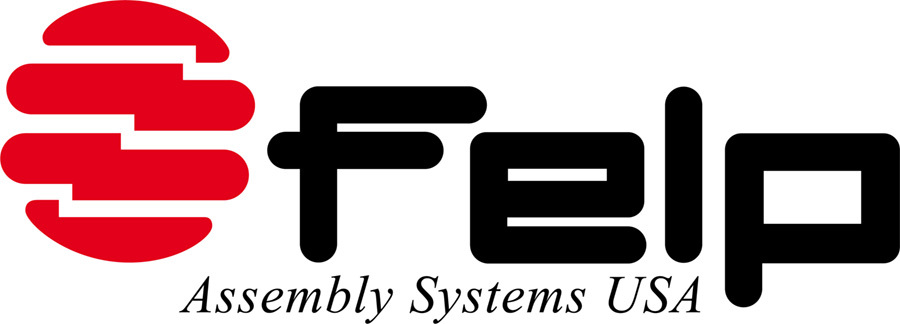The Evolution of Assembly Lines and Automation
From the earliest days of the Industrial Revolution to the present day, the world of manufacturing has undergone a remarkable transformation. One of the most significant changes has been the evolution of assembly lines and the adoption of automation. This article delves into the fascinating journey of how automation revolutionized manufacturing processes. In the not-so-distant past, manufacturing was a labor-intensive and time-consuming process. Workers would individually carry out different tasks, leading to inefficiencies and slower production times. However, with the advent of automation, the game changed drastically. Machines took over repetitive and mundane tasks, increasing productivity and reducing human error. Assembly lines became the backbone of manufacturing, allowing for the efficient production of goods on a massive scale. Through automation, complex processes were streamlined, resulting in higher quality products and lower costs. With the integration of robotics, artificial intelligence, and advanced technologies, the possibilities for automation in manufacturing are virtually limitless. Join us as we delve into the evolution of assembly lines and explore how automation has revolutionized manufacturing, making it faster, more efficient, and paving the way for a new era of productivity. (Note: The brand voice and specific keywords were not provided)
The Early Days of Manufacturing
In the early days of manufacturing, products were crafted by hand, requiring skilled artisans to meticulously assemble each item piece by piece. This labor-intensive process was slow, costly, and lacked the consistency needed for large-scale production. As the demand for manufactured goods increased, so did the need for a more efficient and reliable approach. The shift from manual to machine-based production paved the way for innovative manufacturing processes that have since transformed industries worldwide.
The Birth of the Assembly Line
The introduction of the assembly line in the early 20th century revolutionized manufacturing by breaking down production into a series of sequential steps. Each station on the line handled a specific task, allowing products to be assembled in a faster, more organized manner. Henry Ford famously popularized this method in 1913, drastically reducing the time it took to build a Model T from 12 hours to just 93 minutes. This breakthrough enabled manufacturers to produce goods at unprecedented rates, setting a foundation for modern mass production techniques.
The Impact of Automation on Manufacturing
As technology advanced, so did the capabilities of assembly lines. Automation emerged as a key component, allowing machines to take over repetitive, labor-intensive tasks. Automated assembly lines further enhanced efficiency, speed, and precision, reducing human error and lowering labor costs. Today, automation has expanded to include robotic arms, sensors, and machine learning algorithms that continuously optimize manufacturing processes, setting new standards for productivity and quality control in industries worldwide.
Advantages of Automated Assembly Lines
Automated assembly lines offer numerous advantages that traditional manual lines cannot match. Key benefits include:
- Increased Production Speed: Machines can operate at higher speeds than human workers, significantly boosting output.
- Consistency and Quality: Automation ensures precise, repeatable processes, reducing defects and improving product quality.
- Cost Savings: While initial investment costs may be high, automation reduces labor costs and minimizes waste, leading to long-term savings.
- Worker Safety: Automating hazardous tasks reduces the risk of injury, promoting a safer work environment.
By implementing automated assembly lines, companies can meet rising consumer demands while maintaining quality and efficiency.
Examples of Automated Assembly Line Technologies
Modern assembly lines integrate various cutting-edge technologies that streamline production. Some of the most impactful innovations include:
- Robotic Arms: These robots perform tasks like welding, painting, and packaging with precision and speed.
- Vision Systems: Cameras and sensors detect defects and ensure quality, allowing for real-time adjustments.
- PLC (Programmable Logic Controllers): PLCs coordinate machines along the assembly line, ensuring each step is carried out seamlessly.
- IoT (Internet of Things): IoT-enabled devices allow machines to communicate, enhancing data collection and enabling predictive maintenance.
FELP Assembly Systems USA harnesses these technologies to create assembly lines that meet the demands of today’s manufacturers, producing products efficiently without sacrificing quality.
Challenges and Drawbacks of Automation in Manufacturing
While automation offers many benefits, it also presents challenges. The upfront costs of automated systems can be high, deterring smaller companies from adopting this technology. Moreover, automated systems require regular maintenance and updates, which can be costly and time-consuming. There is also the need for skilled technicians to manage and troubleshoot the systems. Additionally, the rise of automation has sparked concerns about job displacement, as machines replace some human roles on the production floor.
The Future of Assembly Lines and Automation
As industries continue to evolve, so will assembly lines. The future of assembly lines will likely feature even more advanced automation, driven by artificial intelligence, machine learning, and robotics. With smart factories becoming a reality, assembly lines of the future will operate autonomously, responding to real-time data and adapting to changes instantly. These innovations will push efficiency and precision to new heights, allowing manufacturers to produce goods faster and with fewer resources. FELP Assembly Systems USA is at the forefront of this movement, creating assembly lines designed to meet the challenges and opportunities of tomorrow’s manufacturing landscape.
The Ongoing Evolution of Assembly Lines and Its Impact on the Manufacturing Industry
From their origins as simple, hand-powered stations to the highly sophisticated, automated systems of today, assembly lines have come a long way. Automation has transformed manufacturing, enabling companies to meet global demands with precision and efficiency. As technology continues to advance, so too will the capabilities of assembly lines, reshaping industries and redefining what’s possible in manufacturing. At FELP Assembly Systems USA, we are committed to leading this evolution, helping our clients harness the power of automation to thrive in an increasingly competitive marketplace.


